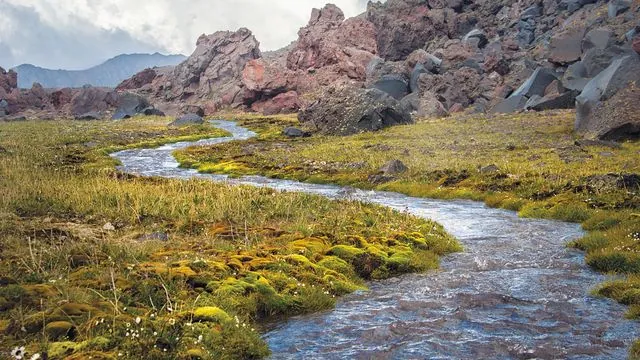
Groundbreaking Study Maps Microbiomes in Nearly All U.S. Rivers: What You Need to Know!
2024-11-20
Author: Li
In an unprecedented research endeavor, scientists from Colorado State University (CSU) have successfully mapped the microbiomes of rivers that span 90% of the watersheds across the continental United States. This landmark study, recently published in the journal *Nature*, sheds light on the essential roles that microscopic organisms play in maintaining water quality and processing contaminants, revolutionizing our understanding of river health.
Key Insights from the Study:
1. **Microbes as Water Quality Guardians**: The study emphasizes that river microbes are instrumental in influencing water quality by breaking down contaminants, including antibiotics and microplastics. This finding is crucial as it highlights the potential of microbes to act as bioindicators of river health.
2. **Core Microbial Communities**: The researchers identified six key microbes present in each river surveyed, supporting the long-standing River Continuum Concept. This ecological theory posits that rivers function as a cohesive system, where interactions upstream can significantly impact downstream activities.
3. **Community Involvement in Science**: The successful mapping effort was bolstered by participatory science, with local community members collecting water samples. This collaborative approach has set a precedent for large-scale scientific research, proving that community involvement can lead to groundbreaking discoveries.
4. **Microbial Power in Pollution Degradation**: Notably, river microbes showed remarkable capabilities in breaking down microplastics into smaller carbon compounds. However, the presence of high levels of antibiotic resistance genes near wastewater treatment facilities raises concerns about human impact on river ecosystems.
A Closer Look at the Research Methodology
Over the course of the study, more than 2,000 microbial genomes were cataloged from approximately 100 rivers, showcasing the diversity and functional roles of these microorganisms. The robust data collection was made possible through a partnership with the Pacific Northwest National Laboratory (PNNL), which leads a global river sampling initiative known as the Worldwide Hydrobiogeochemistry Observation Network for Dynamic River Systems (WHONDRS).
CSU's Professor Kelly Wrighton, a co-author of the paper, noted the intriguing relationship between land management practices and microbial communities in rivers. "Our findings suggest a correlation between the land-use practices surrounding rivers and the microbial fingerprints we observe. This emphasizes the importance of responsible land use for maintaining healthy river systems," he stated.
Implications for Future Research and Ecosystem Management
The implications of this study are profound. With river microbes acting as sensitive indicators of ecosystem health, researchers are hopeful that this information can shape future environmental policies and conservation efforts. This holistic understanding of river ecosystems will not only support biodiversity but also aid in monitoring the impacts of climate change and human activities on water resources.
Moreover, the establishment of a user-friendly database for the microbial data ensures accessibility for researchers and policymakers alike, fostering future studies on river health, pollution management, and biodiversity conservation.
Conclusion
The groundbreaking work of CSU's research team marks a significant milestone in the field of microbiome science, revealing predictable patterns of microbial activity across U.S. rivers. As we uncover the intricate web of life that exists beneath the surface of our waterways, it becomes increasingly clear that protecting these ecosystems is essential for sustaining both human and environmental health. The insights gained from this study pave the way for a deeper understanding of our waterways, encouraging further exploration and discovery in this vital area of science.
Stay tuned as this exciting research heralds a new era for environmental science—one where our rivers can inform us about the health of our ecosystems and the impacts of our actions on nature!


 Brasil (PT)
Brasil (PT)
 Canada (EN)
Canada (EN)
 Chile (ES)
Chile (ES)
 España (ES)
España (ES)
 France (FR)
France (FR)
 Hong Kong (EN)
Hong Kong (EN)
 Italia (IT)
Italia (IT)
 日本 (JA)
日本 (JA)
 Magyarország (HU)
Magyarország (HU)
 Norge (NO)
Norge (NO)
 Polska (PL)
Polska (PL)
 Schweiz (DE)
Schweiz (DE)
 Singapore (EN)
Singapore (EN)
 Sverige (SV)
Sverige (SV)
 Suomi (FI)
Suomi (FI)
 Türkiye (TR)
Türkiye (TR)